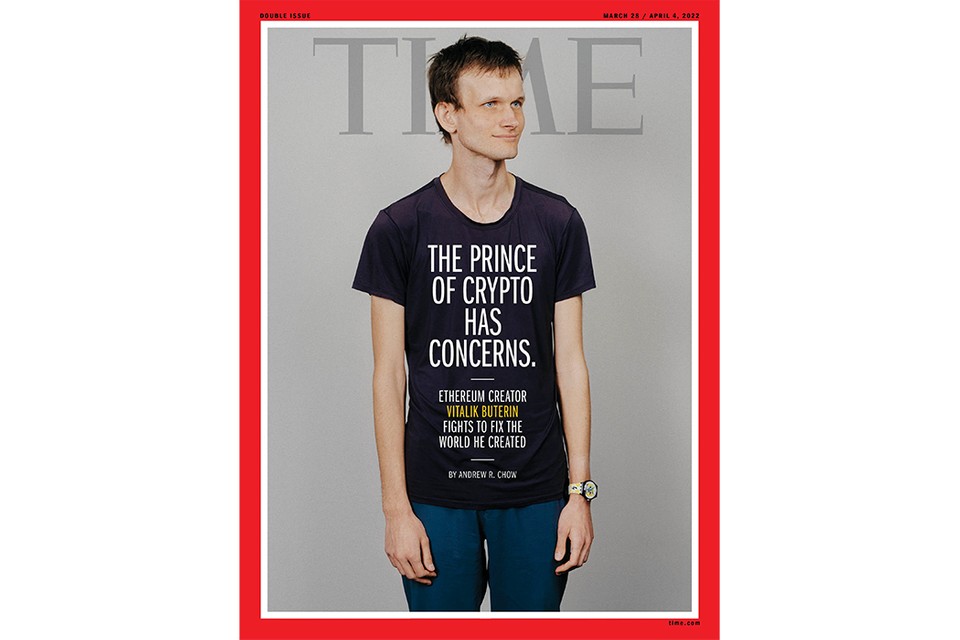Web 3.0, although a relatively young group of technologies, has already been used by a host of companies to build a community and revive their business. TIME Magazine is one of these companies. What have they done in the Web 3.0 space?

TIME Magazine was first published in 1923 and remains one of the most successful publications of all time. But according to president Keith Grossman, it “has been neglected for [the last] 10 years”. At the start of the pandemic after being stuck indoors Grossman realized that for any company nowadays, a digital identity is just as, if not more important, than a physical one.
Luckily for him (and the magazine), in February of 2021, Grossman was made aware of the Pop-Tart NFT sale. The Pop-Tart image was created by Chris Torres in 2011, it features a cat’s head with a Pop-Tart body flying through space with a rainbow trail behind it. 10 years later Torres sold it to an unidentified user as an NFT on Foundation, making roughly $580,000.
Upon hearing about the sale, Grossman realized just how important Web 3.0 and NFTs could be to content creators by allowing them to effectively monetize their creations online. He also believed it would be hugely beneficial for TIME to be an early adopter of the technology. This led to the company launching a number of crypto and NFT projects throughout the rest of 2021.

The TV and film production division of the magazine, TIME Studios, announced in November 2021 that it would be “partnering with NFT creators to develop animated franchises”. TIME also released its TIMEPieces initiative in the same year, but more on that later.
In March 2022, TIME released its first magazine NFT. The issue featured a cover of Vitalik Buterin and a piece entitled The Prince of Crypto Has Concerns, where he lays out his thoughts on the future of Ethereum.
Web3 Collaboration
Later that year in August, in perhaps its most well-known contribution to Web 3.0, TIME created the “Into The Metaverse” NFT collection and made it the front cover of the magazine. The cover was designed by Micah Jonhson, a well-known digital artist in the NFT space. It features Aku, Johnson’s creation, and a figure he considers the world’s first digital explorer, stepping through a portal into another world.
It’s telling that TIME asked a known NFT artist to design the front page rather than one of their own staff. They’re clearly serious about their foray into the space and want to make a positive impact, as opposed to just using it to make money. The collaboration will also generate further interest in the artist’s future works from outside the traditional crypto community and bring more people into the world of Web 3.0.
Grossman sees Web 3.0 adoption as coming via an “experience state”, a state where people talk about lived experiences, such as going out or watching a movie, rather than just technology itself.
He believes that some of the best IP and creative endeavors today are being created in the world of Web 3.0 and can’t understand skeptics of the technology who are so vehemently opposed to its adoption.
The shift from online renting to online ownership through the blockchain is one of the most transformative moments of the 21st century. TIME wants to be at the forefront of this development over the next decade. Grossman believes the best way to do this is to fully embrace the technology rather than be apprehensive and critical of it.
Revenue Generated Thus Far
It’s estimated that TIME’s Web 3.0 projects have generated roughly $10 million in revenue for the company, $600,000 for charities, and created a community of 25,000 passionate artists, fans, and collectors. The potential value of the community is impossible to gauge given the impact Web 3.0 technologies will have in the future but it could be in the billions.
TIME is continuing to foster this community with its TIMEPieces NFT collection. The collection is minted on the Ethereum blockchain and is aimed at building a community around the magazine and Web 3.0. It includes works from over 40 artists around the world involved in a range of disciplines. TIME says this “represents an important first step in TIME’s Web3 community strategy, enabling us to bring together artists, collectors and fans in a collaborative manner with the goal of building utility and community value over the long-term.”
To help grow its community TIME partnered with The Sandbox, to create a virtual space in its metaverse known as TIME Square. TIME Square will act as a central hub for TIME to host art and business events within the virtual world and further grow its profile and community within the Web 3.0 space.
 TIME Square, TIME’s recreation of the famous New York attraction within The Sandbox metaverse.
TIME Square, TIME’s recreation of the famous New York attraction within The Sandbox metaverse.
The Web 3.0 community has been extremely generous in helping TIME make the first steps into the space and Grossman wants to repay the community. He uses his Twitter account to help demonstrate what TIME is doing in the space and showcase new creators. TIME has even split half of some NFT revenue with artists and now allows people to connect wallets to the site. By connecting their wallet and owning a TIMEPiece NFT, a user can get access to selected airdrops, unlimited access to the site and live virtual events.
Grossman said the plan was never to get into Web 3.0 and he initially only wanted to rebuild a brand that had been neglected for a decade. He had however been interested in cryptocurrency since 2014 and saw the business opportunity in the NFT space.
Looking Ahead
It’s impossible to say what the future holds for the magazine and Web 3.0 more broadly but TIME’s first forays into the space have been hugely encouraging. TIME has generated millions of dollars and helped build a community around the magazine which will benefit it going forward. The potential of Web 3.0 can’t be underestimated and companies getting involved early are the ones that stand to benefit most. TIME has shown this and has already built a great foundation, from which it can develop further in the future, and use to help grow its business in the next generation of internet technologies.
Get more insights like this on the business and marketing of the metaverse delivered to your inbox. We’ll never spam you, ever.
Harry Harrison
After spending 3 years traveling around Australia and Asia I began writing about finance whilst stuck at home at the beginning of 2020 thanks to Covid. I've always had a strong interest in business and technology and he thoroughly enjoys learning more about anything connected to the Metaverse, NFTs or crypto. In my spare time he enjoys playing soccer, pool or chess and reading about history, science and technology.
Related Posts
May 15, 2023
Marketing Web 3 Games with Incentivized Token Rewards
Acquiring users for a game is expensive, very expensive. When I previously…
March 7, 2023
Metaverse Marketing – The Emerging Practice
As the digital world continues to evolve, businesses need to stay ahead of the…
December 20, 2022
How The Chinese Digital Silk Road Will Affect Web3
Despite the internet and technology being ubiquitous in the west, much of the…




